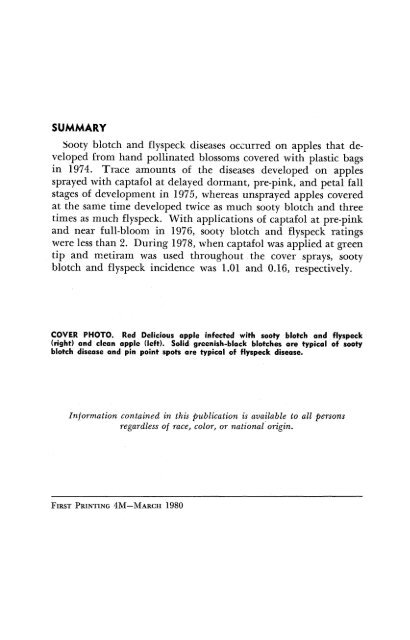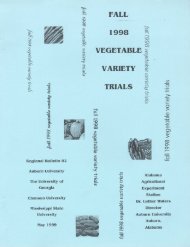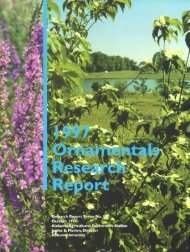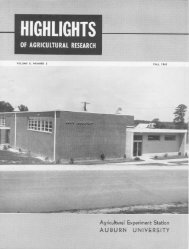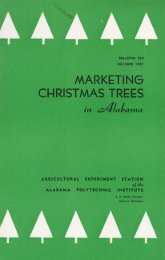Control of Sooty Blotch and Flyspeck - Auburn University Repository
Control of Sooty Blotch and Flyspeck - Auburn University Repository
Control of Sooty Blotch and Flyspeck - Auburn University Repository
Create successful ePaper yourself
Turn your PDF publications into a flip-book with our unique Google optimized e-Paper software.
SUMMARY<br />
<strong>Sooty</strong> blotch <strong>and</strong> flyspeck diseases occurred on apples that developed<br />
from h<strong>and</strong> pollinated blossoms covered with plastic bags<br />
in 1974. Trace amounts <strong>of</strong> the diseases developed on apples<br />
sprayed with captafol at delayed dormant, pre-pink, <strong>and</strong> petal fall<br />
stages <strong>of</strong> development in 1975, whereas unsprayed apples covered<br />
at the same time developed twice as much sooty blotch <strong>and</strong> three<br />
times as much flyspeck. With applications <strong>of</strong> captafol at pre-pink<br />
<strong>and</strong> near full-bloom in 1976, sooty blotch <strong>and</strong> flyspeck ratings<br />
were less than 2. During 1978, when captafol was applied at green<br />
tip <strong>and</strong> metiram was used throughout the cover sprays, sooty<br />
blotch <strong>and</strong> flyspeck incidence was 1.01 <strong>and</strong> 0.16, respectively.<br />
COVER PHOTO. Red Delicious apple infected with sooty blotch <strong>and</strong> flyspeck<br />
(right) <strong>and</strong> clean apple (left). Solid greenish-black blotches are typical <strong>of</strong> sooty<br />
blotch disease <strong>and</strong> pin point spots are typical <strong>of</strong> flyspeck disease.<br />
Information contained in this publication is available to all persons<br />
regardless <strong>of</strong> race, color, or national origin.<br />
FIRST PRINTING 4M-MARCH 1980


